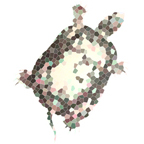The Wildlife Confessional – Crowdfund Campaign Underway
Posted by Matthew Bettelheim in Educational Material, Humor, Natural History, Shameless Promotion on January 31, 2018
 I am excited to announce that The Wildlife Society – Western Section’s long-simmering The Wildlife Confessional anthology, a collection of short stories by dyed-in-the-wool wildlife biologists like myself, is now being crowdfunded for publication through the publishing house Inkshares:
I am excited to announce that The Wildlife Society – Western Section’s long-simmering The Wildlife Confessional anthology, a collection of short stories by dyed-in-the-wool wildlife biologists like myself, is now being crowdfunded for publication through the publishing house Inkshares:
https://www.inkshares.com/books/the-wildlife-confessional-an-anthology-of-stories
The anthology is a collection of fifteen stories by thirteen biologists, including published authors Thomas A. Roberts (Painting the Cows, Adventures in Conservation; reviewed here), Marcy Cottrell Houle (Wings for my Flight, One City’s Wilderness, The Prairie Keepers), and J. Drew Lanham (The Home Place: Memoirs of a Colored Man’s Love Affair with Nature), plus a memoir of the late Dr. Charles Jonkel, co-founder of the Great Bear Foundation.
The authors whose stories have been collected there represent men and women from all walks of wildlife biology – State and Federal biologists, consultants, students, professors, interns – and take place across North and Central America, from the Gulf of Alaska to San Ignacio, Belize, from the tropics of the Hawaiian Islands to the deserts of Arizona, and in the desert springs, coastal bluffs, national parks, stock ponds, pick-up trucks, traplines, doctor’s offices, roof tops, outhouses, and bombing ranges scattered everywhere in between.
This anthology is a labor of love. One of the primary reasons the authors and editors behind The Wildlife Confessional have undertaken this project is to educate and attract students to enter the field of wildlife biology and to apply money raised through book sales to support student involvement in The Wildlife Society by funding scholarships, grants, and training opportunities.
Pre-sales are underway to crowdfund the project at a cover price of $20 paperback / $10 ebook.
You can also follow the project on Facebook at:
https://www.facebook.com/The-Wildlife-Confessional-1070767069681846/
Rare Pond Species Survey Techniques Workshop 2018
Posted by Matthew Bettelheim in Endangered Species, Herpetology, Natural History, Western Pond Turtle, Workshops on December 12, 2017
 This spring, the Laguna de Santa Rosa Foundation and The Wildlife Project are back at it, sponsoring the Rare Pond Species Survey Techniques Workshop, March 24-25, 2018 at the Laguna Environmental Center, Santa Rosa, CA. Workshop instructors Dave Cook and Jeff Alvarez will cover aquatic survey techniques for California tiger salamander (Ambystoma californiense), California red-legged frog (Rana draytoni), and western pond turtle (Clemmys marmorata). After-hours field trips will provide hands-on experience with all three species, including dip net sampling, spotlight surveys, and visual encounter and trapping.
This spring, the Laguna de Santa Rosa Foundation and The Wildlife Project are back at it, sponsoring the Rare Pond Species Survey Techniques Workshop, March 24-25, 2018 at the Laguna Environmental Center, Santa Rosa, CA. Workshop instructors Dave Cook and Jeff Alvarez will cover aquatic survey techniques for California tiger salamander (Ambystoma californiense), California red-legged frog (Rana draytoni), and western pond turtle (Clemmys marmorata). After-hours field trips will provide hands-on experience with all three species, including dip net sampling, spotlight surveys, and visual encounter and trapping.
Dave and Jeff, whom I’ve known for years, are experienced herpetologists who have logged inestimable hours in the field between them studying these species. Their knowledge is priceless, but the workshop worth every penny.
You can learn more about the workshop by visiting the Laguna de Santa Rosa Foundation website.
Herpetological Review: The Herpetological Art of Robert Cyril Stebbins
Posted by Matthew Bettelheim in Endangered Species, Herpetology, History, Natural History, Shameless Promotion, Stebbins, Western Pond Turtle on June 24, 2017
 It has been some time since my last contribution to the Society for the Study of Amphibians and Reptiles‘ journal, Herpetological Review (see also SSAR’s facebook page), so I was honored when I was asked to contribute a retrospective on the late herpetologist and artist Dr. Robert (“Bob”) Cyril Stebbins (March 31, 1915—September 23, 2013) for the column, “Art in Herpetology.”
It has been some time since my last contribution to the Society for the Study of Amphibians and Reptiles‘ journal, Herpetological Review (see also SSAR’s facebook page), so I was honored when I was asked to contribute a retrospective on the late herpetologist and artist Dr. Robert (“Bob”) Cyril Stebbins (March 31, 1915—September 23, 2013) for the column, “Art in Herpetology.”
Hot off the presses in the second issue of the 2017 volume (page 472-473), The Herpetological Art of Robert Cyril Stebbins looks back at the life and career of a man whose contributions to the field of herpetology are still not only celebrated, but put to work on a daily basis as biologists young and old pick up their copy of Stebbins’ field guide, A Field Guide to Western Reptiles and Amphibians, and thumb through the pages to identify this or that lizard, check a species’ range, or compare a specimen to the carefully illustrated plates within.
In the process of preparing this piece, I had the opportunity to handle Dr. Stebbins field notebooks and original intricate illustrations at the Museum of Vertebrate Zoology and Bancroft Library, and had the pleasure of speaking with Professor Emeritus David B. Wake, former Director and Curator of Herpetology at the Museum of Vertebrate Zoology, and Theodore Papenfuss, research specialist at the Museum of Vertebrate Zoology, about their experience working alongside this venerable herpetologist. But nothing says more about Dr. Stebbins’ passion for herpetology than his artwork.
Full Citation: Bettelheim, Matthew P. 2017. Art in Herpetology: The Herpetological Art of Robert Cyril Stebbins. Herpetological Review 48(2): p 472-473.



